How to Cook Beef the Healthy Way
If you enjoy a juicy steak, a home cooked roast or a warming beef stew you will be pleased to know that meat still forms an essential part of a healthy diet.
Meat is versatile and easy to prepare and plays an important role in providing essential proteins and iron in the diet.
Provided you buy lean cuts to begin with, how you cook your beef can make a huge difference. Most cuts of meat contain sufficient fat to aid the cooking process, you don’t need to add much more.
Buying Beef
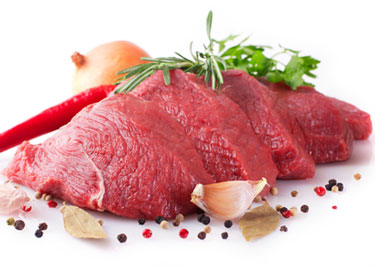
Before you start cooking your beef you need to know how to buy it. What are the best cuts? What are the healthiest cuts? When shopping, look for grass-fed beef not grain-fed beef. Meat from grass-fed animals contains up to five times as much Omega-3 as meat from grain-fed animals.
Choose lean cuts with “loin” or “round” in the name. Tenderloin is amongst the leanest, but has a higher price tag. Less expensive lean cuts can be marinated or casseroled.
When buying look for meat that has a clear, fresh appearance. Avoid anything that has a greyish tinge, an unpleasant odor or a slimy surface.
Buying Ground Beef
Buying ground beef is a little bit more complicated. Ground beef can be labelled by cut or by the ratio of beef to fat. This means that ground beef labelled 85/15 has 85% beef and 15% fat. Unfortunately the leaner the beef the higher the cost per pound. It is also worth remembering that very lean grades tend to be drier and can sometimes lack flavor. I would recommend the 85/15 ratio. Simply drain off any excess fat after cooking.
Storing Beef
Meat should be kept refrigerated, so buy it last when shopping. When you get home unwrap it straight away and place on a covered plate, or use a meat keeper. Meat kept in the refrigerator should be used within a couple of days.
It also freezes very well. Remove the meat from the original packaging and place in a freezer bag expelling as much air as possible. Clearly label the bag, including the date. Most cuts can be frozen for up to 6 months.
How to Cook Beef in Stews and Casseroles
Stews and casseroles are one of the heartiest meals there are and a boon for the home cook because less expensive cuts can be used. They are also some of the simplest, particularly the ones you pop into the oven and forget about until dinner time.
What is the difference between a casserole and a stew? A casserole is cooked in a covered dish in the oven. Whereas a stew is cooked on the stovetop.
Both methods involve slow cooking in liquid, retaining all the vitamins and minerals. The long, slow cooking time allows the connective tissue in the meat to break down and become tender. Adding lots of vegetables, beans or grains gives you a meal-in-a-pot.
Cut the beef into even bite-sized pieces so they cook evenly.
Sometimes the beef needs to be coated in seasoned flour. This helps to thicken the pan juices. The easiest way to do this is to place the flour and seasoning in a plastic bag, add the meat then gently shake the bag to toss. Shake off any excess flour.
Make sure the pan is hot before adding your beef. This ensures that it browns quickly and evenly, sealing in the juices.
Brown the meat in batches. If you put it all in the pan at once, the pan will become overcrowded, the heat will reduce and the meat will stew in its own juices rather than brown.
Add the rest of the ingredients, including the water or stock, bring to the boil, reduce the heat then leave to simmer. Stews and soups are always cooked at a lazy simmer, that is the bubbles barely break the surface. Long boiling makes the meat tough and destroys all the flavors.
Keep the pan covered while simmering. Sometimes you can remove the lid for the last half hour of cooking. This reduces the liquid, thickens the sauce and also intensifies the flavors.
Stews and casseroles often taste better the next day when the flavors have had a chance to develop. Keep refrigerated then gently re-heat and serve.
The added bonus is that any excess fat will come to the surface and solidify, making it easy to spoon it off the top.
How to Pan Fry
Pan frying is a quick and easy cooking method. The benefit of pan frying is that the food is cooked over a relatively high heat so the outside browns, forming a delicious caramelized crust, while the inside remains tender and juicy.
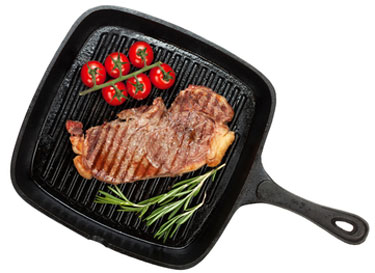
Some recipes recommend flattening your steak before cooking to tenderize it. To do this place your steak between two layers of plastic wrap and pound evenly with a meat mallet or rolling pin.
Thin steaks, such as veal escalopes, should be nicked along the edges to prevent them curling during cooking.
Use a non-stick frying pan sprayed with olive oil cooking spray. Add the steak and cook for 2 – 3 minutes on each side if you like your meat rare. Otherwise reduce the heat to medium and continue cooking for up to 10 minutes each side, or until cooked to your liking.
Turn only once during cooking and leave the pan uncovered. Too low a heat, turning too often or covering the pan will make the meat tough.
After cooking, place the meat on paper towel to drain off any excess fat.
How to Cook Beef on a Grill or Barbecue
Grilling is a dry, high-heat method of cooking and for this reason you need the best cuts or meat that has been tenderized. Cook under direct heat or over hot charcoal.
The cooking time is determined by the heat and the distance from the heat source.
Place your steak on a cold, lightly oiled grill and cook under high heat to seal, turning once only. Then lower the grill tray and continue cooking if you prefer well done.
How to Test for Doneness
How do you know when your meat is cooked to your liking?
For large cuts such as roasts, the easiest way is to use a thermometer.
For steaks, simply nick the meat with a sharp knife and take a peek inside to see if it’s done. Don’t worry about juices escaping, the small amount you lose is preferable to under or over cooked steak.
How to Cook Beef Rare, Medium or Well Done?
Rare: Beef should be soft to touch with a red center and a thin cooked edge.
Medium rare: Beef is springy to touch with a moist, pale-red center.
Medium: Beef is firm to touch, with a pink center and brown edge.
Well done: Beef should be very firm to touch, brown and evenly cooked.
Home » How to Cook Beef


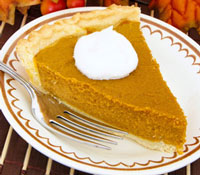
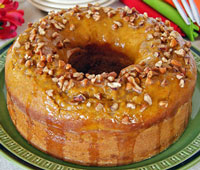
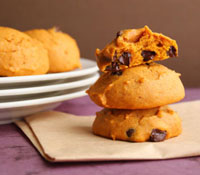

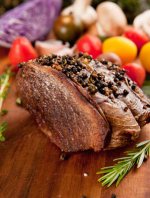
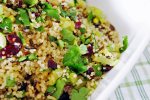
New! Comments
Have your say about what you just read! Leave me a comment in the box below.